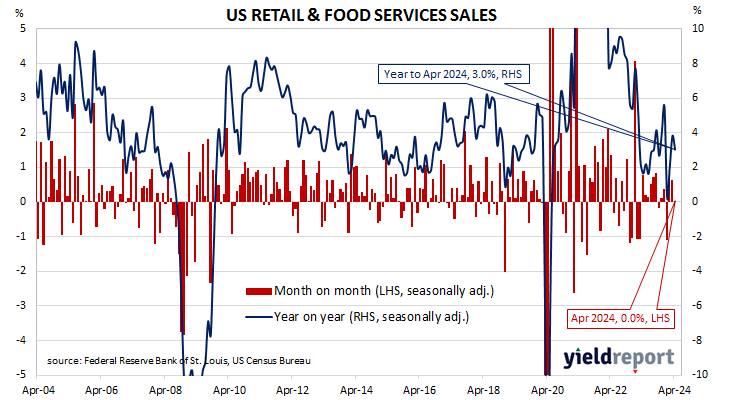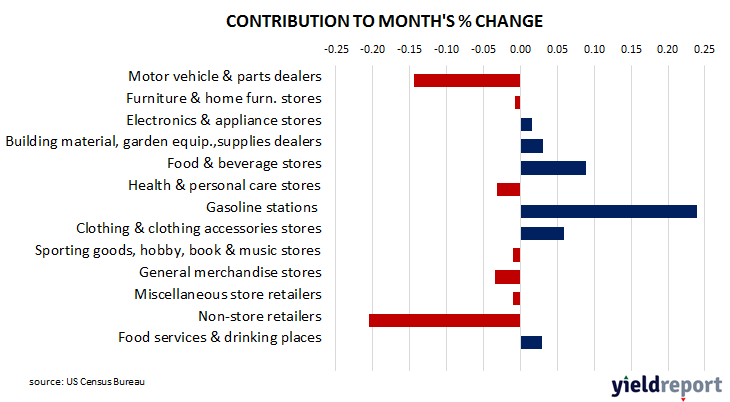Summary: US retail sales flat in April, less than expected; annual growth rate slows to 3.0%; ANZ: indicates moderation in demand, inflationary pressures; US Treasury yields fall significantly; rate-cut expectations firm; higher sales in seven of thirteen categories; petrol station sales largest single influence on month’s result.
US retail sales had been trending up since late 2015 but, commencing in late 2018, a series of weak or negative monthly results led to a drop-off in the annual growth rate below 2.0%. Growth rates then increased in trend terms through 2019 and into early 2020 until pandemic restrictions sent them into negative territory. A “v-shaped” recovery then took place which was followed by some short-term spikes as federal stimulus payments hit US households in 2021. However, growth rates have slowed significantly since mid-2022.
According to the latest “advance” numbers released by the US Census Bureau, total retail sales remained unchanged after rounding in April. The result was less than the 0.4% increase which had been generally expected as well as March’s 0.6% gain after it was revised down from 0.7%. On an annual basis, the growth rate slowed from March’s revised rate of 3.8% to 3.0%.
“The major April US economic releases indicate a moderation in demand and inflationary pressures at the start of Q2,” said ANZ senior economist Catherine Birch. “The labour market is continuing to move back towards balance, April control group retail sales have fallen in three of the first four months of this year and April super-core inflation was the lowest so far in 2024.”
US Treasury bond yields fell significantly across the curve on the day. By the close of business, 2-year and 10-year Treasury yields had both shed 10bps to 4.72% and 4.34% respectively while the 30-year yield finished 9bps lower at 4.50%.
In terms of US Fed policy, expectations of a lower federal funds rate in the next 12 months firmed a little, with at least three 25bp cuts currently factored in. At the close of business, contracts implied the effective federal funds rate would average 5.32% in June, a touch less than the current spot rate, 5.315% in July and 5.185% in September. May 2025 contracts implied 4.465%, 86bps less than the current rate.
Seven of the thirteen categories recorded higher sales over the month. The “Gasoline stations” segment provided the largest single influence on the overall result, rising by 3.1% over the month and contributing 0.24 percentage points to the total. “Non-store retailer” sales also had a large effect on the total, with a 1.2% fall deducting 0.21 percentage points.
The non-store segment includes vending machine sales, door-to-door sales and mail-order sales but nowadays this segment has become dominated by online sales. It accounts for around 17% of all US retail sales and it is the second-largest segment after vehicles and parts.



